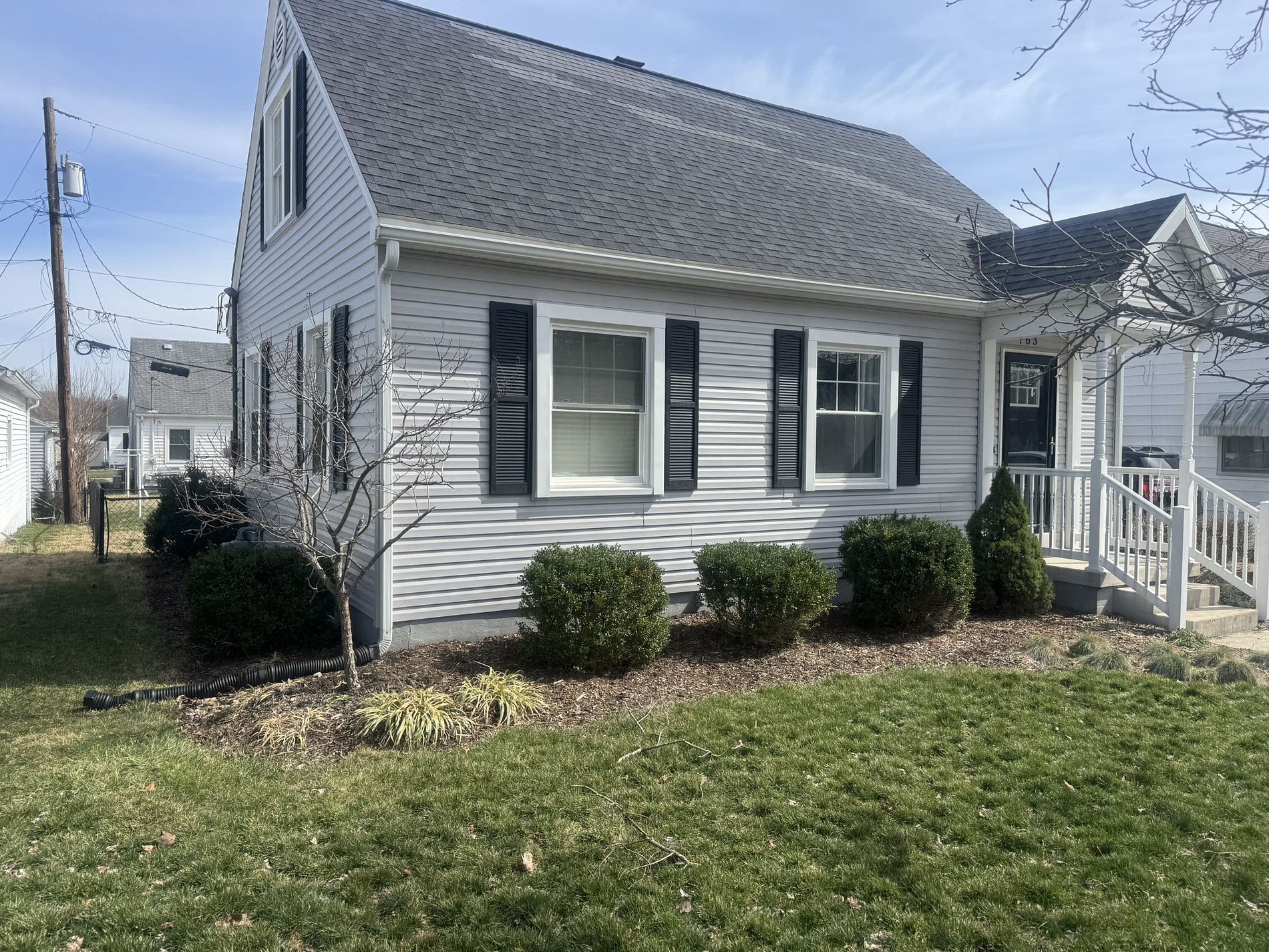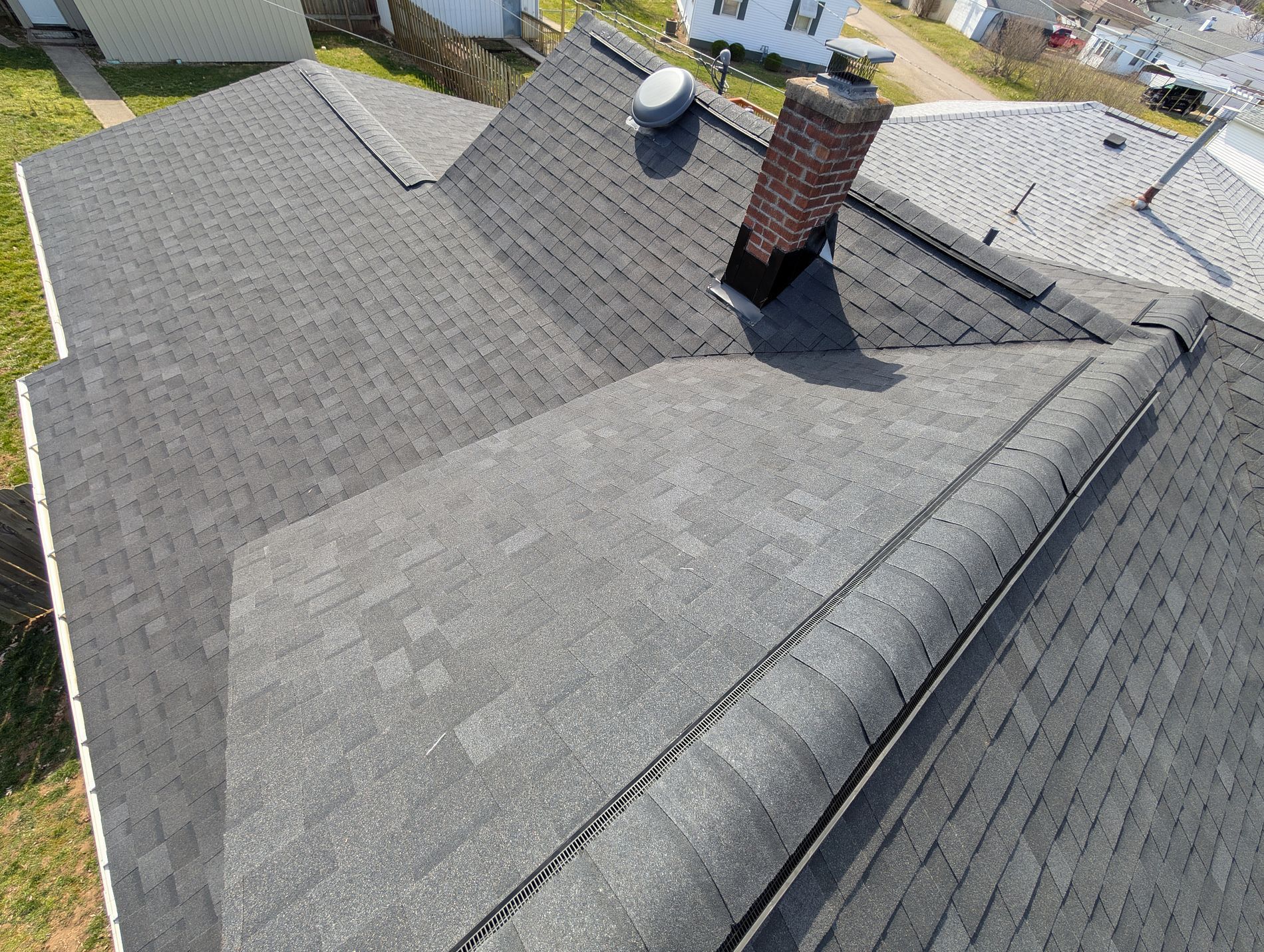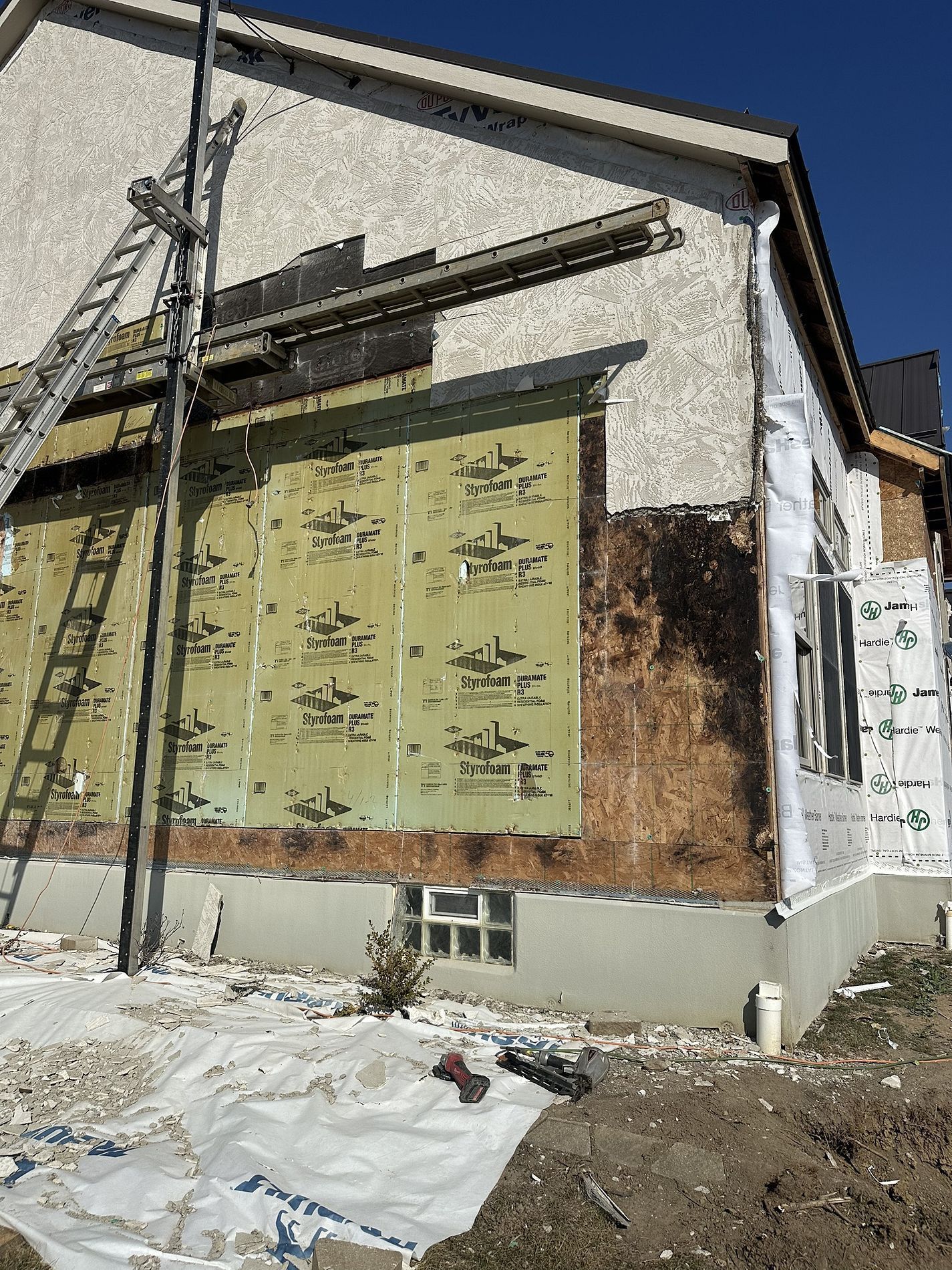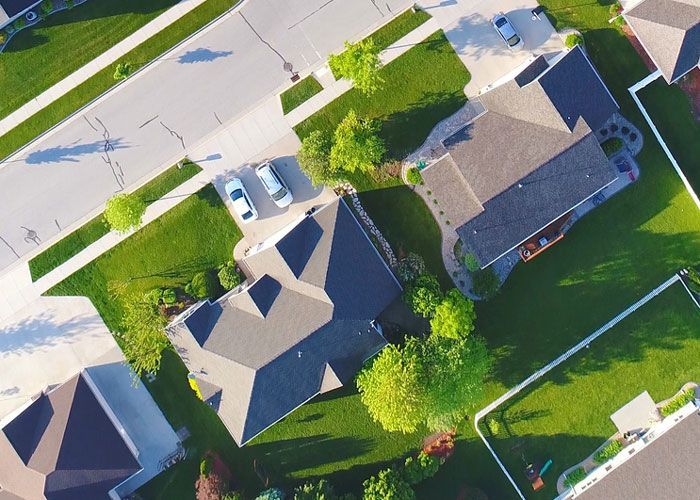May 8, 2025
Maintaining your home's exterior is crucial for preserving its value and ensuring its longevity. One common dilemma homeowners face is whether to paint their existing siding or opt for a complete replacement. While painting may seem like a cost-effective solution, it's essential to understand that it often serves as a temporary fix. In this article, we'll explore why painting your siding is not a long-term solution and what can happen when this approach fails. The Appeal of Painting Siding Painting your home's siding can be an attractive option for several reasons: Cost-Effectiveness: Painting is generally less expensive upfront compared to a full siding replacement. Aesthetic Refresh: A fresh coat of paint can quickly enhance your home's curb appeal, allowing for color updates and style changes. Quick Turnaround: The process of painting is faster than replacing siding , making it a convenient choice for those seeking immediate results. However, these benefits are often short-lived when considering the long-term implications. Is Painting All Types of Siding Advisable? Not all siding materials are suitable for painting. For instance: Vinyl Siding: While it can be painted, the results may not be long-lasting, and the material's ability to expand and contract can lead to paint cracking. Wood Siding: Requires regular maintenance; painting can temporarily protect it but doesn't address underlying issues like rot or insect damage. Fiber Cement Siding: Holds paint better than other materials but still requires periodic repainting. The Limitations of Painting Siding While painting can provide a temporary facelift, it doesn't address underlying issues that may be present in your siding: Masking Damage Painting over damaged siding doesn't resolve the root problems. Issues such as rot, warping, or mold may be concealed temporarily, leading to more significant structural problems over time. For instance, painting deteriorated fiberboard or engineered wood siding without addressing the damage can result in continued degradation, compromising the siding's functionality and appearance. Limited Durability Paint on siding, especially materials like vinyl, may not adhere well or last long. Vinyl siding , due to its chemical properties, doesn't hold paint effectively, leading to peeling and cracking. This necessitates frequent repainting, making it a less durable solution. Maintenance Requirements Painted siding requires regular maintenance to keep it looking fresh. Exposure to elements can cause paint to fade, chip, or peel, requiring touch-ups or complete repainting every few years. This ongoing maintenance can become time-consuming and costly. Consequences of Failing Paint on Siding What Happens When Paint Fails? Aesthetic Decline: Peeling or faded paint diminishes curb appeal, potentially affecting property value. Structural Vulnerabilities: Exposed siding is susceptible to moisture intrusion, leading to rot, mold, and even structural damage. Increased Energy Costs: Damaged siding can compromise insulation, leading to higher heating and cooling expenses. Can Failing Paint Lead to More Severe Issues? Yes, neglecting failing paint can result in: Pest Infestations: Damaged siding can provide entry points for insects and rodents. Comprehensive Siding Failure: Over time, the siding may deteriorate beyond repair, necessitating a full replacement. Common Problems When Painting Vinyl Siding Painting vinyl siding presents unique challenges such as: Color Limitations: Darker colors can cause vinyl siding to absorb more heat, leading to warping or buckling. Adhesion Issues: If the siding is not properly cleaned and primed, paint may not adhere correctly, resulting in peeling. Manufacturer Restrictions: Some vinyl siding manufacturers void warranties if the siding is painted, especially with colors not recommended by them. The True Costs of Repainting vs. Replacing Siding Short-Term Savings vs. Long-Term Investment When considering home exterior maintenance, homeowners often weigh the immediate savings of repainting against the long-term benefits of full siding replacement. While painting offers a quick and affordable fix, it comes with ongoing costs and maintenance requirements that add up over time. In contrast, new siding is a higher upfront investment but provides durability, energy efficiency, and a significant boost in home value. Repainting Costs: A Recurring Expense The cost of professionally painting an average-sized home typically ranges from $3,000 to $5,000 per application, depending on the size of the home, the type of paint used, and labor costs. Painted siding needs to be refreshed every 5 to 10 years due to fading, peeling, and weather damage—meaning a homeowner could pay for repainting three or more times over a 30-year period. Over time, this can add up to $9,000 to $15,000 (or more) in repainting costs —potentially exceeding the cost of full siding replacement without the added benefits. Siding Replacement Costs: A Long-Term Investment A complete siding replacement typically costs between $8,000 and $15,000 depending on materials, labor, and home size. While this may seem like a significant upfront expense, it provides decades of protection and curb appeal with minimal maintenance. Modern siding materials such as fiber cement, engineered wood, and insulated vinyl can last 20 to 50 years with little upkeep, reducing long-term costs and eliminating the hassle of frequent repainting. Additionally, new siding enhances energy efficiency, leading to lower heating and cooling costs, which provides ongoing savings beyond just maintenance. Hidden Costs of Frequent Repainting While repainting may seem like a cost-effective short-term solution, there are several hidden costs and inconveniences that homeowners should consider. Labor Expenses Over Time Add Up Each time you repaint your siding, you are not just paying for materials but also for professional labor, which can account for a significant portion of the total cost. Even if you choose to repaint the siding yourself, you'll still need to invest in quality paint, primers, brushes, and other supplies—not to mention the time and effort required. Over a few decades, the cost of multiple repainting projects can easily exceed the price of a one-time siding replacement. The Inconvenience of Repeated Maintenance Projects Repainting is not a permanent fix—it’s a recurring task. Homeowners must schedule and coordinate the project every few years, which can be disruptive. The process typically involves: Surface Preparation: Cleaning, sanding, and priming the siding to ensure proper adhesion. Multiple Coats of Paint: A single coat won’t provide long-term durability, meaning at least two coats (or more) are required. Weather Delays: Extreme temperatures, humidity, and rain can delay painting projects, further adding to the hassle. By comparison, replacing siding eliminates the need for repeated maintenance, saving both time and frustration. Potential Repairs for Underlying Damage That Painting Does Not Address One of the biggest drawbacks of painting is that it only masks existing siding issues rather than fixing them. Some common hidden problems include: Rot and Decay: Wood siding that is already rotting will continue to degrade under layers of paint. Moisture Damage: If water has seeped into cracks, painting over them won't prevent mold or further deterioration. Warping and Structural Weakness: Older siding materials may be compromised and unable to properly protect your home. If these issues go unnoticed and worsen over time, homeowners may eventually need a full siding replacement anyway, meaning the money spent on repainting could have been used more efficiently on a permanent solution. Advantages of Siding Replacement Long-Term Solution: High-quality siding materials can last 20-50 years with minimal maintenance. Enhanced Energy Efficiency: Modern siding options offer better insulation, reducing energy bills. Improved Aesthetics: New siding provides a fresh, updated look, boosting curb appeal. Increased Property Value: Homes with new siding often have higher resale values. Your Top Siding Questions, Answered How long does paint last on siding? Paint on siding typically lasts between 5 to 10 years. However, factors such as weather exposure, quality of preparation, and paint type can impact longevity. Can I paint my siding instead of replacing it? Yes, but it's only a temporary fix. Painting does not address issues like rot, cracks, or energy inefficiency. Siding replacement offers a more durable and cost-effective solution in the long run. Will painting my siding void my warranty? In many cases, painting your siding can void the manufacturer's warranty, particularly for vinyl and fiber cement siding. Always check with your siding manufacturer before painting. What is the best alternative to painting my siding? Siding replacement with durable materials like vinyl, fiber cement, or engineered wood is the best alternative. It enhances your home’s curb appeal, improves energy efficiency, and eliminates the need for frequent repainting. How do I know if my siding needs to be replaced? Signs that indicate the need for siding replacement include peeling paint, visible cracks, warping, moisture damage, and increased energy bills. A professional siding inspection can determine the best course of action. A Smarter Approach to Home Exterior Upgrades While painting your siding may offer a quick and affordable facelift, it's essential to recognize its temporary nature and potential pitfalls, especially in regions where the climate can accelerate wear and tear. Replacing your siding , though a more significant investment, provides a durable, low-maintenance solution that enhances your home's appearance and structural integrity. Always consult with a reputable roofing contractor to determine the best approach for your home's exterior needs. Looking for the perfect siding solution? Visit Allstate Exteriors to explore our wide range of siding options and get expert guidance tailored to your home’s needs. Have questions or are you ready to get started? Fill out our quick contact form and a siding specialist will be in touch shortly!

















